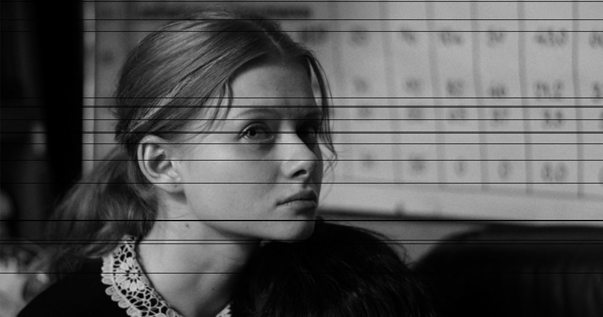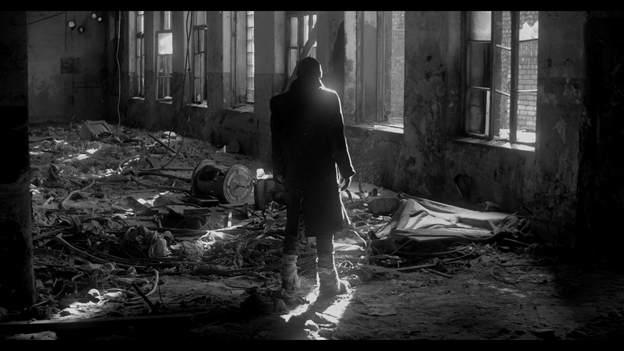Secretly the best film at 2019’s SXSW, there’s certainly not enough praises being sung about ONE MAN DIES A MILLION TIMES. Director Jessica Oreck’s fifth film is, on the surface, a slight dramatization of the real events leading up to and during the several years-long Siege of Leningrad (now St. Petersburg). Strangely pitched as “a true story, set in the future,” the film takes liberty in showcasing somewhat modern technology to supplant that of the 1940s. To the unconvinced, it means no one would greenlight a full-on period piece. But to those intrigued, it starts giving a Strugatsky Brothers science-fiction feel that morphs into, once steeped into the themes of the film, a feeling a bit close to home. And that’s not even getting at the film’s use of color.
The majority is in black and white, but as the war slowly looms closer, the outside conflict itself ushers in color. The first time it’s the orange glow of glittering ashes sprinkling the sky. Then eventually gunfire brings light, and with it, bloody-wound maroon reds. Coupled with the winter snow, there is a certain coldness to the black and white, but also a calmness which proceeds to be disturbed by the aforementioned war’s raging warmth. And with many shots basking in slow cinema pacing, it all is truly a sight to behold.

Following several Soviet botanists working for the Vavilov Institute for Plant Industry, the voice-over of one named Alyssa, played by Alyssa Lozovskaya, describes the group’s moral struggle in choosing between saving a potential future generation’s necessary seed supply or saving their own skins. Interestingly enough, the narration turns out to be lifted straight from actual scientists’ journals, thus rooting this docufiction, like Oreck’s other films, in reality. But instead of sugarcoating the real world with folktales as with BABA YAGA, there’s an intensity both quiet and operatic in ONE MAN DIES A MILLION TIMES that’s reminiscent of the late, great Larisa Shepitko’s war epics, a feat for American director Oreck, whose work now fits in almost too nicely with Russia’s and Eastern Europe’s compendiously rich film culture.
Certainly there’s death and suffering, but ONE MAN DIES A MILLION TIMES isn’t as a whole completely dour. Prefacing all that, the film focuses on Alyssa’s romance with fellow botanist Maksim, played by Maksim Blinov, early on. As the two walk through the streets of a yet-to-be-attacked Leningrad, passing by St. Petersburg’s modern TV sets, Alyssa details her incredulity concerning her country being plunged into war. The love Maksim and Alyssa have for each other is foremost in their minds, though deep enough to root for through it all. The modernities of the mise en scène makes their story even less far removed, but in turn makes it that much more devastating for when the war really hits.

Life hangs by an inch as the winter war arrives. Despite people showing who they really are in stripped-down desperation, whether it be a selfish coward or heroic martyr, the whole idea of war remains to so many simply as one man dying many times. This very real sentiment read from the diary of someone who had actually suffered through this stirs, if not warns. That terror and fear coming from the shift of safety into wartime feels real because, at a point, it was. One of the most striking moments later on is in a bomb shelter, where many are stuffed in. Alyssa tells how each time the group hears bombs drop, everyone’s convinced the next will be their last. Yet every time the cathartic blast turns out to be from afar, they feel not a safe relief but rebirth, thrust back into foolish cold flesh after last prayers have been said. Offered here is a truly gripping account of life on the edge. Even with the liberties it takes, the film strikes a chord in this way even to circumspect Westerners. As much as it is still somewhat an influence in our current lives the world over, one can never read enough about Word War II, but to those who weren’t there, it will forever be one man dying a million times.
















Comments